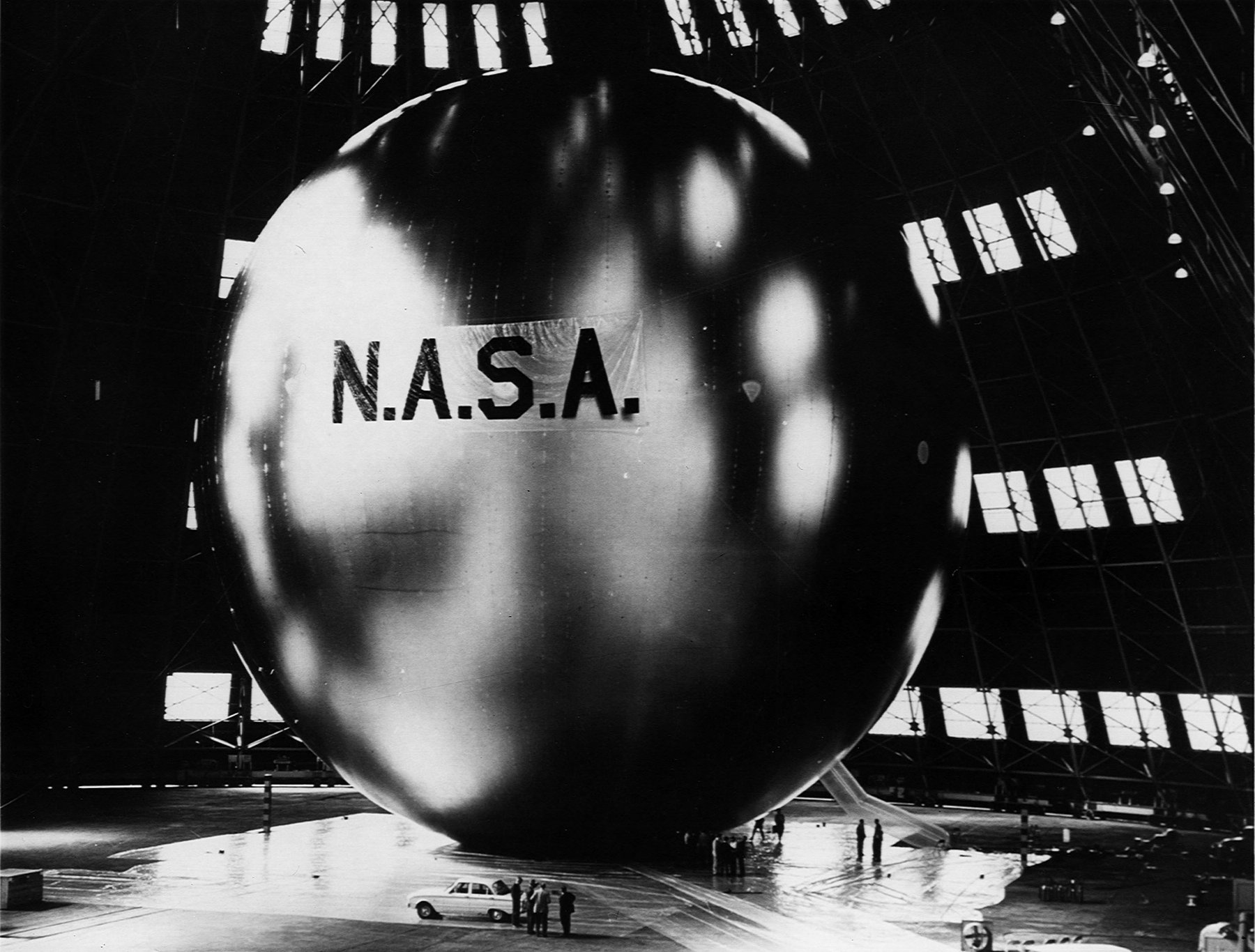© 2018 All Rights Reserved. Do not distribute or repurpose this work without written permission from the copyright holder(s).
Printed from https://www.damninteresting.com/curio/echos-of-nasa/

On 13 May 1960, a NASA Thor-Delta rocket carried the agency’s new Echo 1 satellite into a 1,000 mile orbit around the Earth. It was a 156.995 pound metalized sphere 100 feet in diameter, essentially an enormous, shiny balloon made of the same mylar as party balloons of today. It required forty thousand pounds of air to fully inflate the sphere at sea level, but in the rarefied atmosphere in orbit it only required a few pounds of gas.
Echo 1 was a passive satellite, used to reflect transcontinental and intercontinental telephone, radio, and television signals. It was so large and so reflective that it was easily visible to the naked eye for much of the Earth. It was expected to remain in orbit until sometime in 1964, but it survived much longer, and did not burn up in the atmosphere until 24 May 1968, eight years after its launch.

Its sister “satelloon” Echo 2 was even larger at 135 feet in diameter, therefore it was even more conspicuous while it was in orbit from 1964-1969. Both balloons were sufficiently large and lightweight that they experienced detectable pressure from the solar wind, providing support for the concept of a solar sail. They also secretly served as an early rudimentary GPS system, using the balloons’ positions and instruments to calculate the exact location of Moscow for America’s intercontinental ballistic missiles.
© 2018 All Rights Reserved. Do not distribute or repurpose this work without written permission from the copyright holder(s).
Printed from https://www.damninteresting.com/curio/echos-of-nasa/
Since you enjoyed our work enough to print it out, and read it clear to the end, would you consider donating a few dollars at https://www.damninteresting.com/donate ?
I remember those days well. It was as if everything was magic.
And I still do.
Am I truly the only one to have read this article?
@JarvisLoop: Folks just don’t leave site comments very often these days, most people want to put their commentary on social media. Also, when this nugget was published, our nuggets did not yet support comments. Support for comments on nuggets was added in a later update, so many of our earlier nuggets got skipped over.
The local newspaper would publish time and location when ECHO 1 or 2 would be overhead/visible.
Fascinating stuff!
Mr. Bellows:
As you can see, this is the first time that I have returned to this site since my last post. (Interestingly, this is the one-year anniversary of my first post.) It seems that you are correct about visitors’ reluctance to post comments. Truly sad development.
I like Radlar’s post, and I recall doing the same thing. My whole family would gather outside to watch it go over.
Today, I receive emails that let me know when the space station will be visible.
Today, I turned 67, and my first granddaughter turned 2.
I really liked this article. I had no idea something like this ever existed. I am 45
Tomorrow – May 14, 2025 – I will be 72, and my first granddaughter will be 7. And, believe it or not, my third granddaughter was also born on my birthday! She will be three.